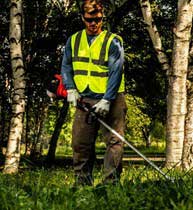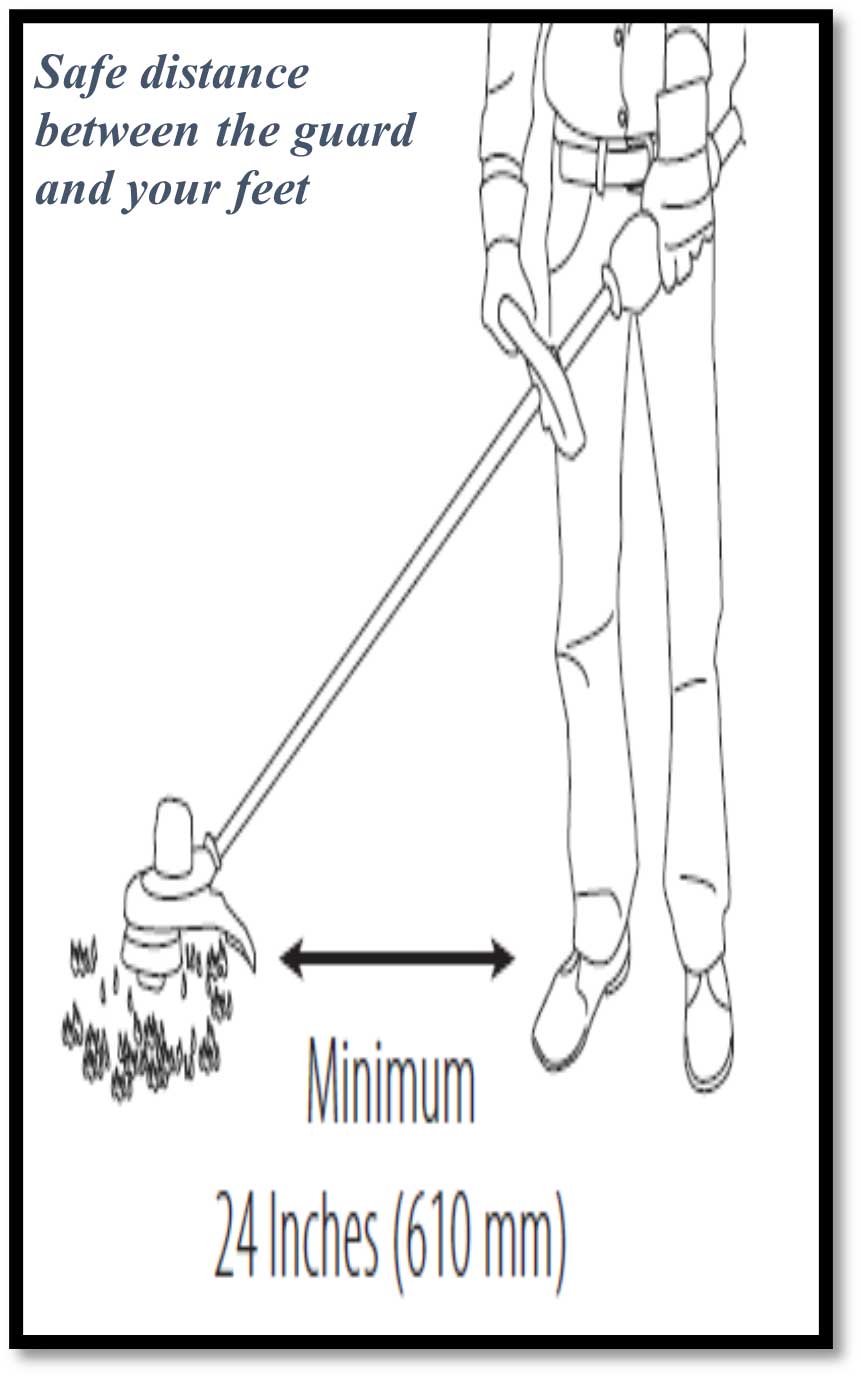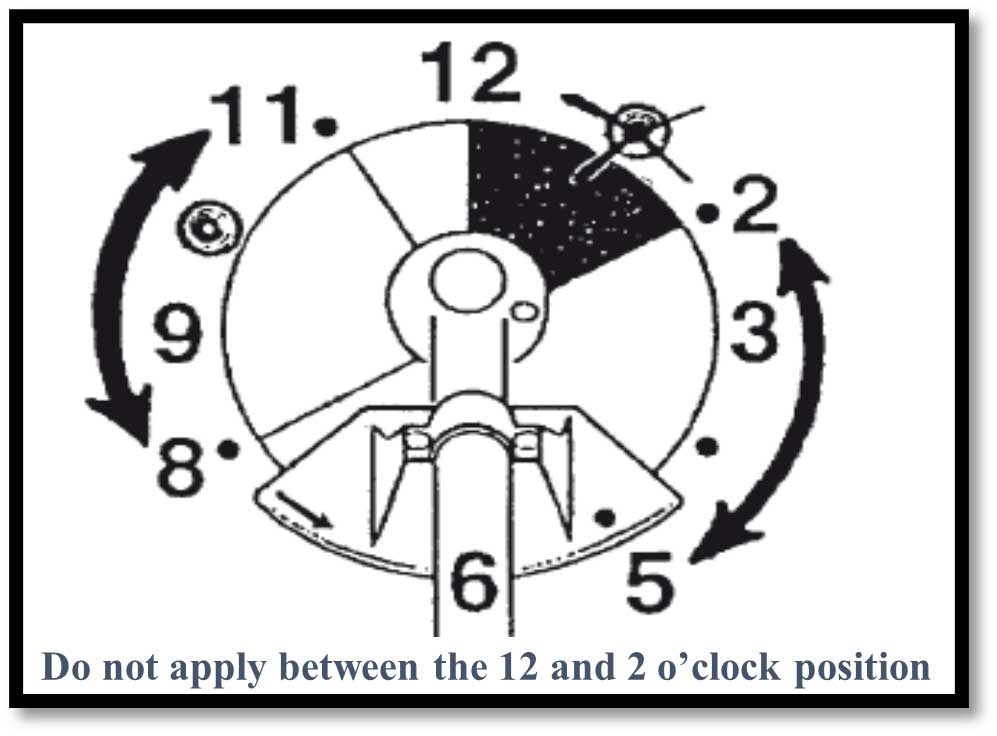String Trimmer Toolbox Talk
String Trimmer
String Trimmers, AKA “Weed-Wackers” or “Weed-Eaters,” are common landscaping tools used at Cornell University. Incidents with this equipment can happen quickly and can be dangerous to the user and passer byers. These risks can be minimized through safe operating procedures and with the use of appropriate personal protective equipment.
Training
Prior to operating the equipment for the first time, the operator should receive training from their supervisor, and review the Operator's Manual to familiarize themselves with the inspection requirements and operating procedures. The operator should familiarize themselves with the string trimmer’s controls, string installation, and refueling procedures.
Preparing for safe operation
-
Inspect your equipment prior to and periodically throughout operation:
- Test equipment functions to ensure they are working properly.
- Make sure kill switch and throttle are fully operational.
- Ensure that the trimmer guard is in place and in good condition.
- Check for accumulated grass or grease.
- If using blades, ensure that the blades are sharpened adequately.
- Adjust the hand grip to suit your size before starting work.
- Test equipment functions to ensure they are working properly.
- Prepare the trimming area:
- Pick up debris such as rocks, sticks, bottles, cans, wires, etc.
- While scanning the area for debris, locate other potential hazards such as drop-offs, holes, etc.
- Remember slip, trip, falls are the #1 incident on campus. Report holes to supervisor so they be filled and leveled.
- Use Personal Protective Equipment:
- Wear safety glasses, hearing protection, gloves, and non-slip safety shoes. High-visibility vest is required when working on or near roadways.
Safe operating procedures
- Start the equipment on firm ground in an open area.
- When you pull the starter cord, do not wrap the starter rope around your hand. Do not allow the cord to snap back, guide the starter rope to rewind properly.
- Always hold your string trimmer firmly with both hands while you are working.
- Use shoulder strap when provided to aid holding and supporting machine.
- Keep a distance of at least 15-20 feet from bystanders. Power the trimmer down if you are approached by another person.
- Throttle pulsing or bursts are preferred to wide open throttle work especially around people/targets.
- Point string trimmer in the opposite direction of people or traffic, especially when trimming on higher level. In higher level, the string trimmer can launch debris directly toward people or vehicles at lower level.
- Always cut away from yourself, never towards yourself to avoid being struck by flying projectiles.
- Remember that on straight shaft unit, the line head rotation is counterclockwise.
- Do not lift the cutter deck when the equipment is in operation.
- If you are not cutting or trimming (i.e. moving to another location or picking up debris) power the trimmer down.
- Stay clear of moving parts.
- Never put hands or feet near or under rotating parts.
- Maintain a minimum distance of 24 inches (610 mm) between the guard and your feet as shown beside.
- Moving forward with the string trimmer will reduce the risk of trimming over your feet.
- Shut off the engine before unclogging the unit head or to adjust the string trimmer.
- To avoid placing hands near the moving parts, use a stick to remove the clog.
- Preventing slips while using string trimmers.
- Be careful with your footing while using manually controlled equipment. Always walk, do not run, and continually evaluate your surroundings for unlevel ground, drop-offs and holes.
- Kickback’s prevention (if you are using blades):
- Never cut a solid object, such as bushes and trees between the 12 and 2 o’clock position (see image).
- Cutting between the 8 and 11 o’clock positions significantly reduces kickback potential.
- Cutting between 11 and 12 o’clock, and between 2 and 5 o’clock, must be performed only by experienced operators, when the user has good body position and firm grip.
- Fueling (if applicable) must be done outdoors and while the equipment is off.
- Never perform maintenance on running equipment.
- To prevent incidents, turn machine off and remove battery before making any adjustments or removing/installing attachments, string lines or blades.




